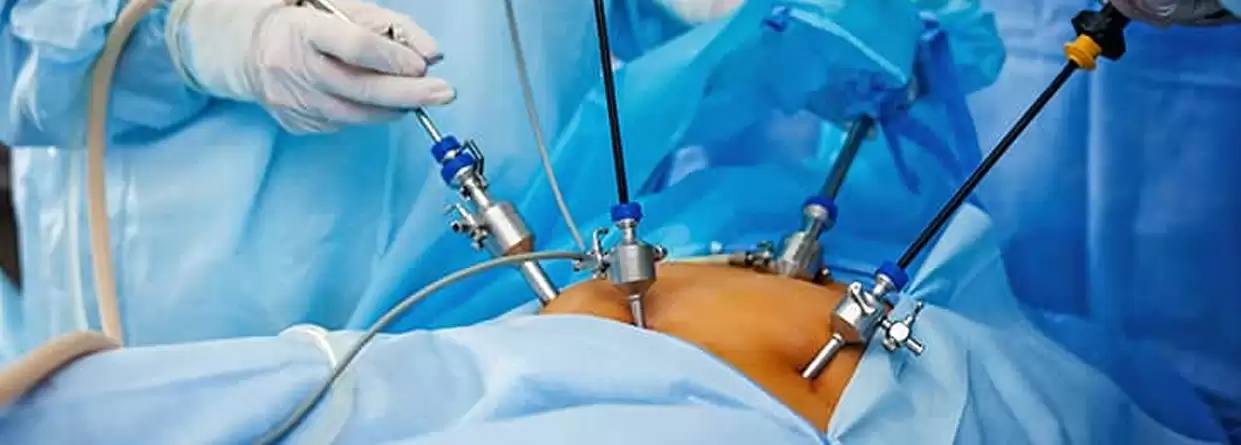
 Emergency No: 08062136598
Emergency No: 08062136598
General Surgery | by CMRI | Published on 01/04/2020
Laser stone operation also called lithotripsy, is a medical procedure that uses a laser or high-energy shock waves to break stones of the kidney, gallbladder or ureter. Once the stone is broken, the remaining particles are flushed out of the body while urinating. Stones in kidney, gallbladder or ureter, are a common phenomenon some stones are small enough and pass on their own, while for others, medical intervention may be required because of their size. Large stones cause a lot of pain and also block the flow of urine; thereby, treatment becomes an immediate requirement.
Basically, stones are hard masses of tiny crystals formed due to excessive accumulation of certain minerals in the body and lack of fluids to dissolve the minerals. These minerals include calcium, oxalate, and uric acid. When the concentration of these minerals in the body exceeded a certain level, and there is not enough presence of fluids to dissolve these minerals – stones are formed. Apart from this, some other factors such as poor diet, severe diarrhea, excessive weight, family history, or certain medicines can also cause the formation of stones.
Stones are generally brown or yellow in color and have a smooth, as well as a rough texture. These can be the size of sand, gravel, pearl or even bigger and is usually painful since it blocks the flow of urine. In some cases, people do not even realize the presence of stones unless they start to stir and move, causing discomfort and pain. However, in case of stones do not pass on their own, they can cause immense damage to the kidneys and urinary tract. Thus, when medications fail to flush out stones, a laser technique may be used to break down the stone into small pieces, enabling it to pass through. This method of using laser for stone operations is known as lithotripsy.
There are two types of lithotripsy used for stone operations, including:
Both operations treat stones effectively; the usage of one over the other depends on the overall health of a person and the type of stone.
Extracorporeal Shock Wave Lithotripsy (ESWL): This method of treatment of stones uses high-frequency shock waves to break down the stones. In this operation, an instrument known as a lithotripter is used to direct sound waves or focus ultrasonic energy directly at the stones, causing them to break into smaller pieces. These high-frequency sound waves only affect the stones and do not cause any harm to the surrounding organs and tissues. The shock waves travel into the body from the skin and tissue, breaking stones into smaller pieces. Post the operation, the broken smaller pieces are eventually passed through urine over several days or weeks. The stone operation is about an hour long with a short hospital stay and quick recovery time. This enables patients with certain types of stones in the body to avoid invasive surgery to remove stones.
Flexible Ureteroscopy and Laser Lithotripsy (FURSL): This surgical treatment involves using an endoscope – a flexible, thin tube with a light and high-definition camera mounted on top of it – to see inside the impacted organ and reach the stones. Thereafter, the laser is used to break the large stone into smaller pieces, allowing them to pass through the urine in the following days and weeks. The surgery time is approximately 30 minutes, and the patients are discharged on the same day, as well as the recovery time is really short, with average people returning to their normal activities within a week or two.
Before any laser stone operation, the doctor will determine the number of stones, the size, and the location of the stones in the body. This is done by injecting a dye into a vein to conduct an intravenous pyelogram (IP) to help locate the stones in the body. The injected dye travels through the bloodstream into the kidneys, ureter, and bladder, highlighting the stones as dark spots in an X-ray.
Possible events that you will witness post-surgery but need not be panicked about:
Further, one must consult the doctor about any precautions to follow post the laser stone operation. Precautions might also vary a condition on the condition, and proper consultation is very critical. However, in general scenarios, one must carefully follow these rules to recover well after a laser stone operation.